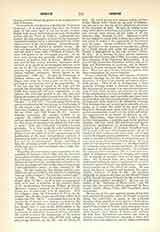

Gertrude of Hackeborn, Cistercian Abbess of Helfta, near Eisleben; b. near Halberstadt in 1232; d. towards the end of 1292. She belonged to the noble Thuringian family of Hackeborn and was a sister of St. Mechtild. At an early age she entered the Cistercian convent of Rodersdorf, of which she was elected abbess in 1251 when she was only nineteen years old. In 1253 she founded, with the assistance of her two brothers, Albert and Louis, the convent of Hedersleben. Because her own convent suffered from want of water she obtained from her brothers the castle of Helpeda, or Helfta, with its surrounding land, and transferred her community to that place in 1258. During her rule, the convent of Helfta became the most famous abode of asceticism and mysticism in Germany. She required her nuns to be educated in the liberal arts, but insisted especially on the study of Holy Scripture. Gertrude was a model abbess, remarkable for her piety as well as the prudent direction of her nuns. About a year and a half before her death, the abbess was seized with apoplexy, and during her sickness gave to all her nuns an example of heroic patience and resignation to the will of God. The Abbess Gertrude must not be confounded with St. Gertrude “the Great”. The Abbess Gertrude, quite in contrast with St. Gertrude “the Great”, never wrote anything, received no extraordinary revelations from God, and has not been canonized. She was born more than 20 years before Gertrude “the Great”, who lived as an ordinary nun in the same convent.
MICHAEL OTT

